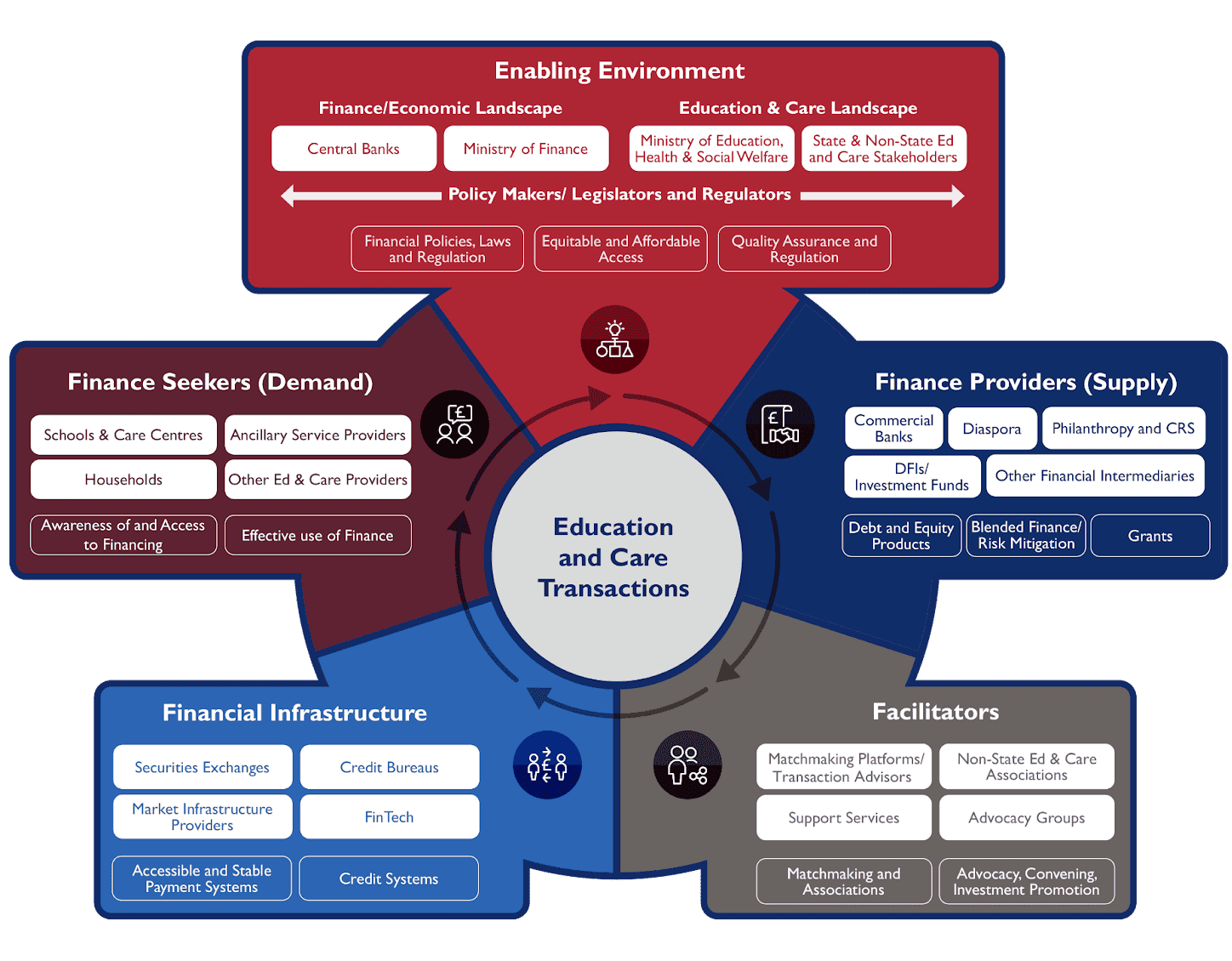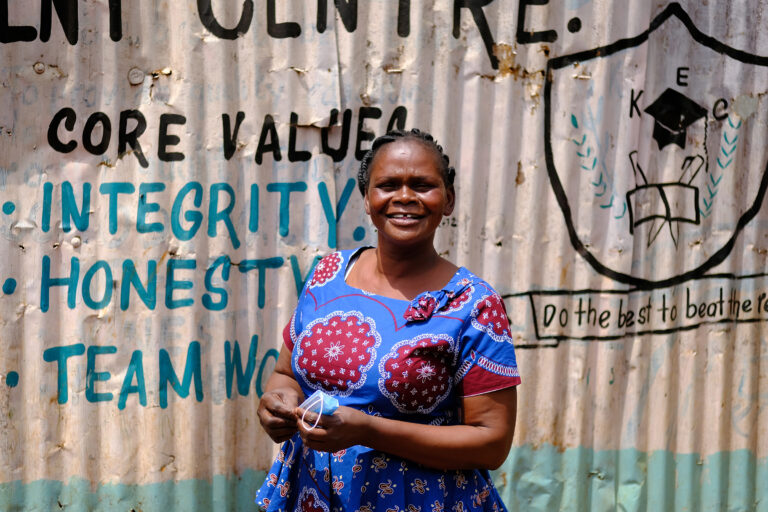The USAID Five-Point Framework for Non-State Education Finance

The Five-Point Framework for Non-State Education Finance is a practical, field-tested tool designed to assess the ecosystem for financing non-state education in low-and-middle-income countries (LMICs). Developed under the USAID CATALYZE EduFinance initiative, the Framework has broad applicability for practitioners seeking to understand the education finance landscape in a particular context and/or design interventions that will mobilize new sources of capital for the education sector to improve access, quality and learning.
Specifically, the tool and associated How-To Guide is designed to support donors, implementers, investors, and policymakers to:
- Conduct diagnostic assessments of non-state education ecosystems at all education levels;
- Identify context-specific barriers and opportunities in education finance ecosystems;
- Inform the design of education finance programs that are data-driven, locally grounded, and investment-ready;
- Strengthen coordination between public and private educational actors and funders/financial institutions.
Bridging the Global Education Finance Gap
Led by Palladium, CATALYZE EduFinance sought to bridge the $100 billion annual education funding gap facing LMICs through innovative blended finance pilots in 11 countries. From 2020-2025, CATALYZE developed promising interventions and generated significant learning, using the 5-Point Framework to guide the initial landscape analysis and design of each intervention. Key achievements of CATALYZE EduFinance prior to USAID’s dissolution include mobilizing more than $38M in new sources of private capital to improve access and quality in non-state schools, training 800+ school leaders, and reaching more than 1.1M students and 7500+ schools and parents.
With the recent drastic reductions in donor funding to education, the global education funding gap will only continue to increase without concerted action to mobilize new sources of education financing. CATALYZE demonstrated that non-state education providers are playing an increasing role in education service delivery in LMICs, and we can unlock new sources of financing to complement public sector education efforts through innovative, blended, and results-based financing models. The Five-Point Framework equips practitioners with a strategic tool to build on this impact by identifying key barriers, mapping market dynamics, and pinpointing viable entry points for public-private and blended finance solutions.
The Five Pillars of the Framework
The guide includes a diagnostic tool and adaptable guiding questions to fit your specific sector, geography, or investment thesis, structuring analysis across five interconnected pillars:
- Enabling Environment – The legal, regulatory, and policy landscape that shapes education markets.
- Finance Seekers – Households, schools, and education enterprises needing access to capital.
- Finance Providers – Sources of capital including financial institutions, investors, donors, and philanthropies.
- Financial Infrastructure – Systems like credit bureaus, mobile payments, and asset registries that enable financing.
- Facilitators – Intermediaries, associations, and advocates who link supply and demand and strengthen system coordination.
Access the full guide and toolkit by clicking on the links below:
Acknowledgements
The development of this framework was a collaborative endeavor, made possible by the support of the American People through the United States Agency for International Development (USAID). This guide was based on the Mobilizing Private Finance for Development (MF4D) guide developed by USAID (Lawrence Camp, Autumn Gorman, and Caroline Smith) and Deloitte (Steve Watkins). The MF4D Framework was tailored to fit the nuances of the education finance sector with input from USAID (Suezan Lee, Andrew Meaux, Lawrence Camp, Anne Laesecke, Dagmawit Tessema, and Autumn Gorman), Palladium (Joe Di Silvio, Ashraf Hammad, and Alexander Read), and Cambridge Education (Daniel Waistell and Renee Perez).





